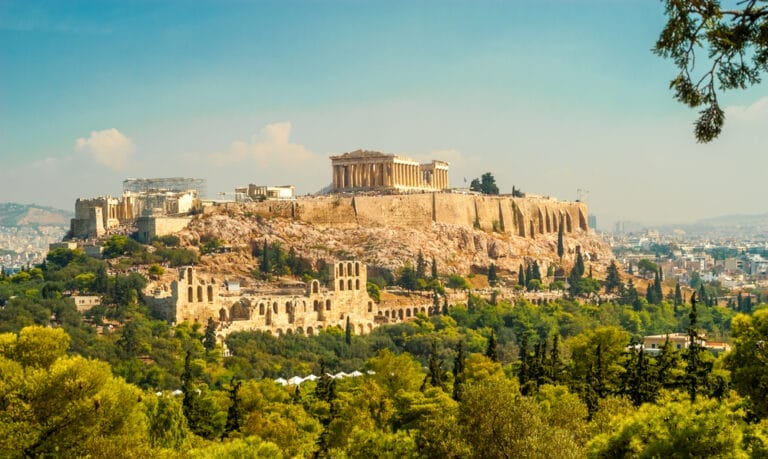National Animal of Greece: A Complete Guide (Dolphin & Birds)
Are you planning your trip to Greece and you are naturally an animal lover and wondering what is the National Animal of Greece?
In this post, I will be sharing a lot about my trip to Greece and by the end of the post, you will also get to know how I spent some time with the National Animal of Greece during my visit to Greece.
Greece has a rich cultural and historical significance, and the choice of its national animal, the dolphin, is deeply intertwined with its heritage. The national animal of Greece holds a special place in the hearts of the locals and is revered as a symbol of the country.
Let’s find out more about this in the post below.
What is the national animal of Greece?

The national animal of Greece, revered for its symbolic representation of freedom and grace, is the dolphin. Embedded deeply within Greek culture, this majestic sea creature not only holds historical significance but also embodies the enduring spirit of the Mediterranean region.
Now you may say Sankalp! come on it is not an animal but a fish, well Dolphin has a special place in the culture.
Greek myths, legends, and art often include dolphins because they are historically and culturally important. Dolphins represent friendship, freedom, and the Greeks’ close relationship with the sea.
Why is Greece’s national animal a dolphin?
In ancient Greece, the dolphin was associated with the god Apollo and the goddess Athena. The Greeks considered the dolphin, or “delphinus,” as a sacred animal, and it symbolized protection, guidance, and good fortune for sailors and fishermen.
The national animal of Greece is not a dolphin, but rather the dolphin is considered a symbol of Greece. Dolphins have a long history in Greek mythology and are associated with various gods and goddesses, such as Poseidon, the god of the sea.
Dolphins are known for their intelligence, grace, and connection to the sea, which is significant for a country with a rich maritime heritage like Greece. Additionally, dolphins are often seen as friendly and playful creatures, embodying the spirit of hospitality and joy that is characteristic of Greek culture.
Can you swim with dolphins in Greece?
Okay, I know you are fascinated with the thought of swimming with dolphins in the Mediterranean Sea, who doesn’t want to play with them it is always fascinating.
However I would not recommend you to do something like that, of course, you can catch a glimpse of them if you are lucky on the private boat tour in Greece during your Island hopping.
Because, In the end, they are wild animals and you would not know how they would react, we are not talking about the Dolphins in some Zoo.
What time of year do you see dolphins in Greece?
Dolphins can be spotted throughout the year in the coastal waters of Greece. However, the best time to observe them is during the warmer months when they are more active and visible in the region.
Many people have the desire to witness the beauty of dolphins, captivating creatures. If your Greece trip includes the hope of encountering these playful animals, you’re in luck! Greece offers a wonderful opportunity to see dolphins due to its extensive coastline and crystal-clear waters.
The ideal time to catch a glimpse of dolphins in Greece is between April and October. During these months, dolphins are often spotted joyfully leaping and frolicking in the water, taking advantage of the calm seas and sunny, warm weather.
Dolphins tend to be more active during the cooler parts of the day, such as early morning or late afternoon, when the sun’s heat is not too intense. While on a boat or simply relaxing on the beach during these months, keep your eyes peeled towards the sky.
With any luck, you may have the chance to witness a pod of jubilant dolphins, adding an unforgettable touch to your Greek adventure.
Where are you most likely to see dolphins in Greece?

Dolphins are commonly sighted in the waters surrounding the Greek islands and along the coast of Greece. Certain areas, such as the Gulf of Corinth, the Ionian Sea, and the Aegean Sea, are known for their dolphin populations.
If you are lucky you can also find them on the islands lie Corfu, Mykonos and Crete. Always make sure to keep your eyes open when you are taking your boat trip,
I highly recommend taking the following cruise in Greece if you are interested in spotting dolphins and having a fantastic day on the Santa Maria wooden boat, complete with a delicious lunch.
What other Animals Live in Greece?
Aside from the dolphin, Greece is home to a diverse array of wildlife, including the national bird of Greece, the little owl, along with other animals such as the lynx, golden jackal, and various species of birds and marine life.
Certainly! Here’s some information about the animals mentioned:
1. European Bee-eater
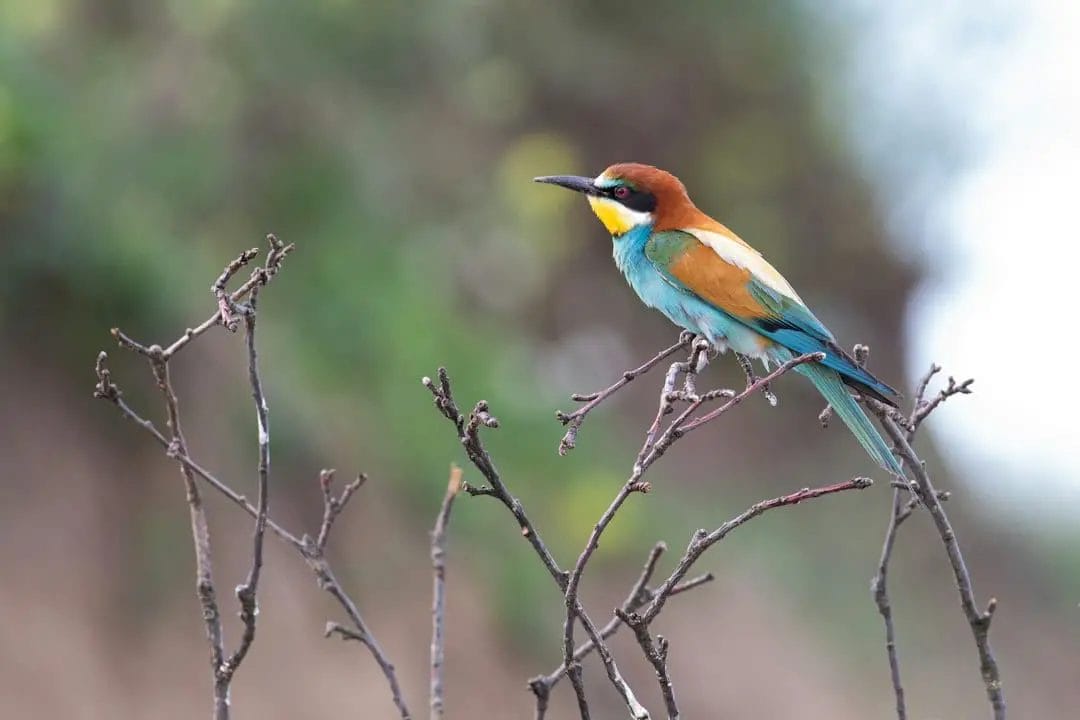
The European Bee-eater is a colorful bird that can be found in Greece during the summer months. It has vibrant plumage with a combination of blue, yellow, and brown feathers. As the name suggests, this bird primarily feeds on bees and other flying insects.
2. Loggerhead Sea Turtle

The Loggerhead Sea Turtle is a species of marine turtle that nests on the Greek coasts. It is one of the largest sea turtles and is known for its distinctive large head. These turtles are endangered and protected in Greece. They nest on sandy beaches and feed on a variety of marine life.
3. Balkan Lynx
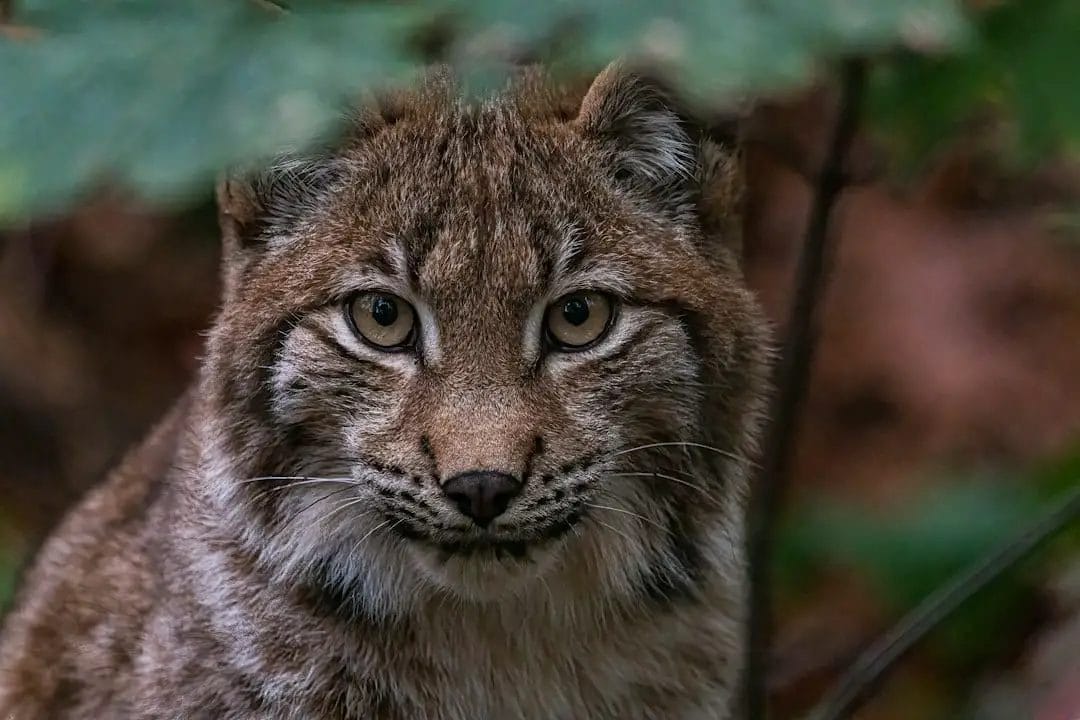
The Balkan Lynx is a rare and elusive wildcat that is native to Greece and other Balkan countries. It is one of the most endangered cat species in Europe. The Balkan Lynx has a beautiful spotted coat and long tufted ears. It primarily preys on small mammals such as rabbits and hares.
4. Wild Goat (Kri-Kri)
The Wild Goat, also known as Kri-Kri, is a subspecies of the wild goat that is endemic to the island of Crete in Greece. It has a compact body with curved horns and a brownish-gray coat. The Kri-Kri is well adapted to the rugged mountainous terrain of Crete and is considered a symbol of the island’s wildlife.
5. Dalmatian Pelican
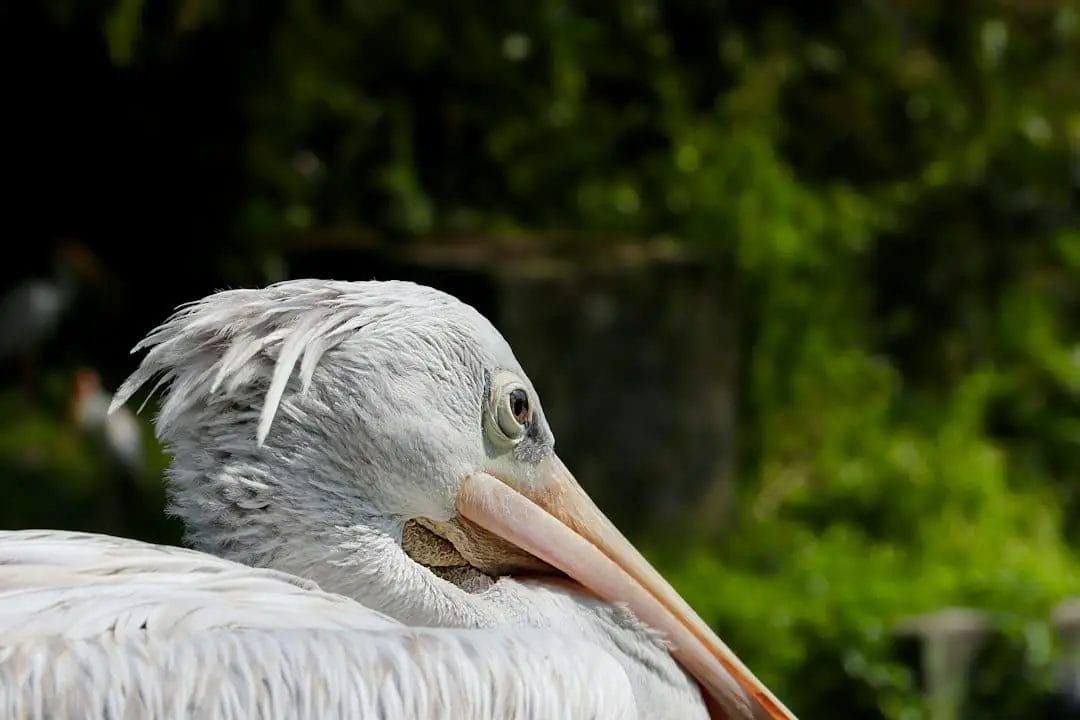
The Dalmatian Pelican is a large water bird that can be found in Greece, particularly in wetland areas such as Lake Kerkini. It is one of the world’s heaviest flying birds and has a distinctive pouch-like throat. The Dalmatian Pelican primarily feeds on fish and nests in colonies.
6. Eurasian Otter

The Eurasian Otter is a semi-aquatic mammal that can be found in rivers and coastal areas of Greece. It has a sleek body, webbed feet, and a long tail, which make it an excellent swimmer. The otter feeds mainly on fish and other aquatic prey.
7. European Mouflon
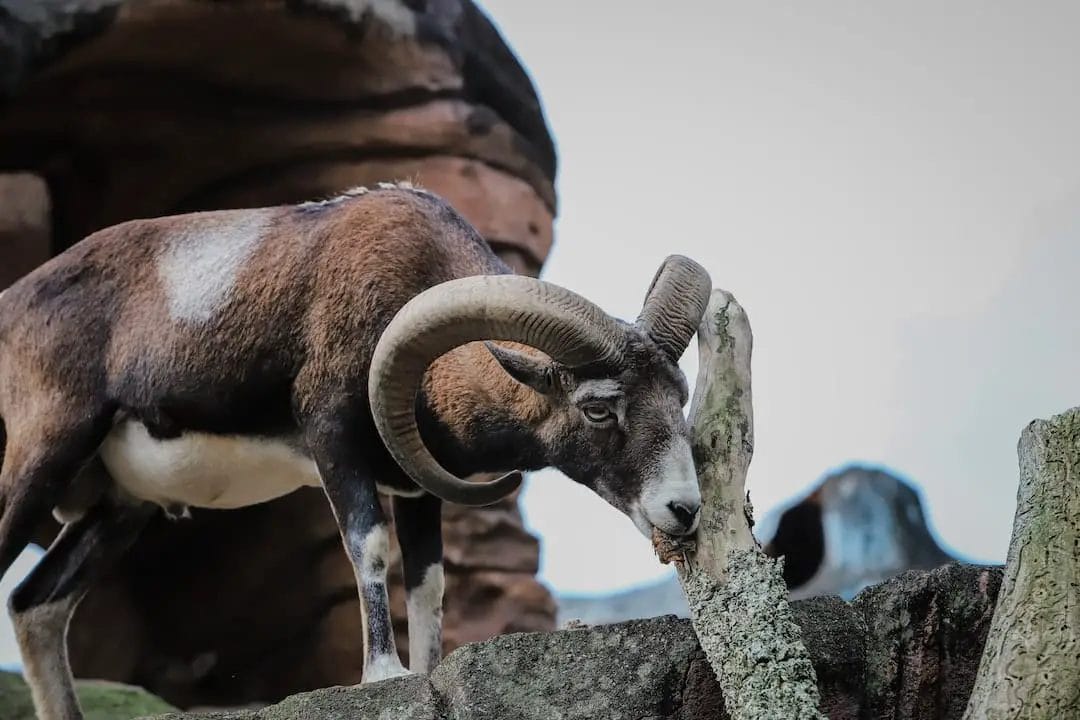
The European Mouflon is a wild sheep species that can be found in various regions of Greece, including mountainous areas. It has a robust body with long, curved horns in both males and females. The European Mouflon grazes on grasses and other vegetation.
8. Marbled Polecat
The Marbled Polecat is a small carnivorous mammal that can be found in Greece and other parts of Europe and Asia. It has a marbled pattern on its fur, which gives it its name. The Marbled Polecat feeds on rodents, birds, and other small animals.
9. Hermann’s Tortoise
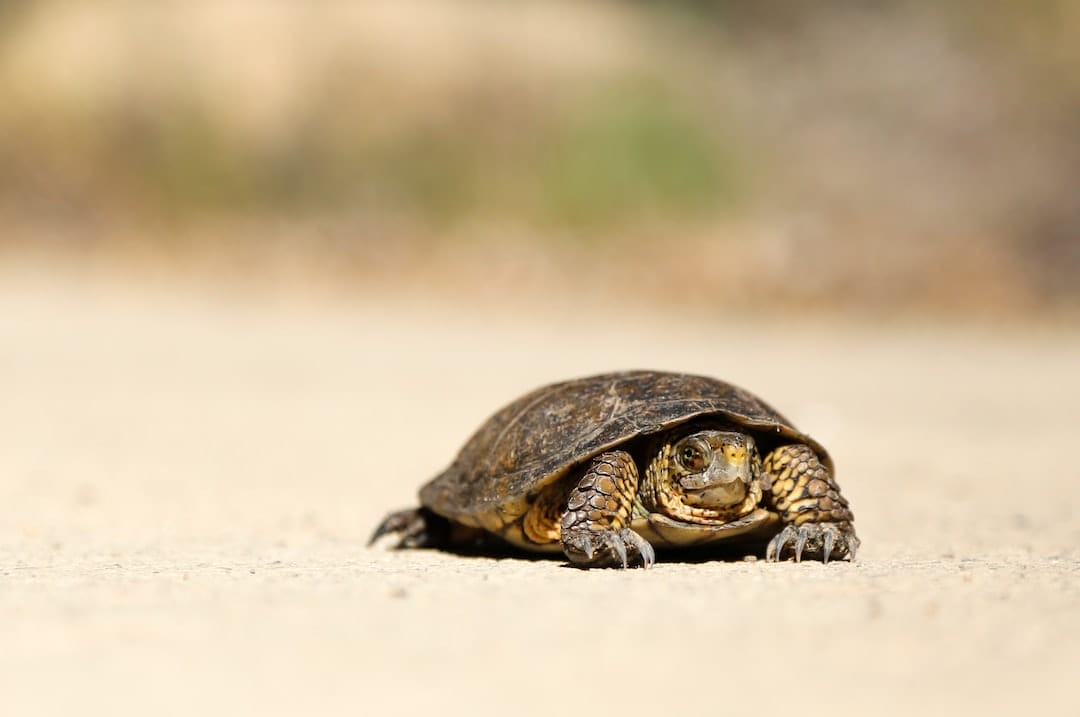
Hermann’s Tortoise is a species of land tortoise that can be found in Greece and other Mediterranean countries. It has a domed shell with yellowish-brown markings. These tortoises are herbivorous and feed on a variety of plants and vegetation.
10. European Roller

The European Roller is a colorful bird species that breeds in Greece during the summer months. It has striking blue feathers, a brownish-orange back, and a long, slender beak. The European Roller feeds on insects, small reptiles, and amphibians.
These animals represent just a fraction of the incredible biodiversity found in Greece’s diverse ecosystems.
What is the National Bird of Greece?
The national bird of Greece is the little owl. This small and iconic bird holds cultural significance in ancient Greek mythology and is associated with the goddess Athena, symbolizing wisdom and protection.
What do Owls Mean in Greek Mythology?
In Greek mythology, owls were often associated with the goddess Athena, who was the goddess of wisdom, knowledge, and strategic warfare. The owl was considered to be Athena’s sacred bird and a symbol of wisdom.
It was believed that owls had the ability to see in the dark and could therefore reveal hidden truths and bring clarity to difficult situations. The presence of an owl was seen as a sign of Athena’s guidance and protection. Additionally, owls were also associated with prophecy and were believed to have the power to foretell the future.
What is the Little Owl?
The little owl, scientifically known as “athene noctua,” is a species of owl that is native to the Mediterranean region, including Greece. It plays a significant role in Greek folklore and is celebrated as a symbol of wisdom and protection.
Do Little Owls Live as Couples?
Little owls, like many other bird species, often form monogamous pairs. They are known for their strong familial bonds and are often seen nesting in pairs, especially during the breeding season.
Is the Little Owl Featured on the Greek Flag?
No, the little owl is not featured on the Greek flag. However, it holds symbolic importance and cultural significance, representing the connection of Greece with its historical and mythological roots.
Is the Little Owl Featured on the Greek Money?
The little owl has been depicted on ancient Greek coins, reflecting its long-standing association with the culture and heritage of the region. It is a symbol of wisdom and a timeless emblem in Greek history.
What is a Phoenix?
The phoenix is a mythical bird associated with Greek folklore. It is depicted as a majestic creature that symbolizes renewal, resurrection, and immortality, embodying the cyclical nature of life and the enduring spirit of Greece.
What Other Birds Live in Greece?
Greece is home to a diverse avian population, including a variety of bird species such as eagles, falcons, herons, and seabirds. The country’s rich natural landscapes provide habitats for numerous bird species, making it a paradise for birdwatchers and nature enthusiasts.
Conclusion:
Greece is a fascinating place filled with magical stories and a strong connection to nature. Dolphins are the special creatures of Greece and symbolize their love for the sea.
So, when you see a dolphin or think about Greece, remember the amazing tales and the spirit of a nation that values freedom and its beautiful animals.
Have a great trip to Greece and enjoy seeing dolphins!
Do you want to know more about Greece then check our Travel Resource for Greece
National animal of Greece: FAQs
Q: What is the national animal of Greece?
A: The national animal of Greece is the dolphin.
Q: Is the dolphin the official national animal of Greece today?
A: Yes, the dolphin is the official national animal of Greece today.
Q: Why is the dolphin considered the national animal of Greece?
A: The dolphin’s significance dates back throughout Greece’s history. It is also associated with the goddess Athena’s blessing and symbolizes Greece’s endurance.
Q: What is the national bird of Greece?
A: The national bird of Greece is the mythical phoenix.
Q: Is the mythical phoenix the official national bird of Greece?
A: Yes, the mythical phoenix is the official national bird of Greece.
Q: What does the mythical phoenix symbolize in Greek culture?
A: The mythical phoenix symbolizes Greece’s endurance and has always been associated with the country’s national identity.
Q: Are there any other unofficial national animals or symbols in Greece?
A: Yes, the common dolphin and the mythical phoenix are the unofficial national animals of Greece. Additionally, the white cross and the olive tree are also associated with the country’s national identity.
Q: Do marine animals hold significance in Greek culture?
A: Yes, marine animals, particularly the dolphin, hold special significance in ancient Greek mythology and art.
Q: How are the national animals and symbols of Greece depicted in the country’s history and art?
A: The national animals and symbols of Greece are often depicted on coins, in Greek art, and are deeply embedded in the country’s cultural heritage.
Q: What other animals are frequently associated with Greece’s national identity?
A: In addition to the dolphin and the mythical phoenix, various birds, such as owls and other marine animals, hold symbolic significance in Greece’s national identity.
Get your Notion Travel Planner Template!
Embark on your next adventure with the Wanderlust Planner, the ultimate Notion Travel Planner Template. Organize your wanderlust-fueled dreams and turn them into unforgettable journeys. Whether you’re a seasoned globetrotter or a newbie explorer, this template has you covered.


